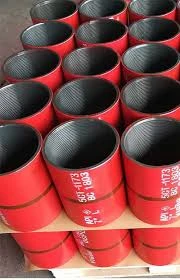- Afrikaans
- Albanian
- Amharic
- Arabic
- Armenian
- Azerbaijani
- Basque
- Belarusian
- Bengali
- Bosnian
- Bulgarian
- Catalan
- Cebuano
- Corsican
- Croatian
- Czech
- Danish
- Dutch
- English
- Esperanto
- Estonian
- Finnish
- French
- Frisian
- Galician
- Georgian
- German
- Greek
- Gujarati
- Haitian Creole
- hausa
- hawaiian
- Hebrew
- Hindi
- Miao
- Hungarian
- Icelandic
- igbo
- Indonesian
- irish
- Italian
- Japanese
- Javanese
- Kannada
- kazakh
- Khmer
- Rwandese
- Korean
- Kurdish
- Kyrgyz
- Lao
- Latin
- Latvian
- Lithuanian
- Luxembourgish
- Macedonian
- Malgashi
- Malay
- Malayalam
- Maltese
- Maori
- Marathi
- Mongolian
- Myanmar
- Nepali
- Norwegian
- Norwegian
- Occitan
- Pashto
- Persian
- Polish
- Portuguese
- Punjabi
- Romanian
- Russian
- Samoan
- Scottish Gaelic
- Serbian
- Sesotho
- Shona
- Sindhi
- Sinhala
- Slovak
- Slovenian
- Somali
- Spanish
- Sundanese
- Swahili
- Swedish
- Tagalog
- Tajik
- Tamil
- Tatar
- Telugu
- Thai
- Turkish
- Turkmen
- Ukrainian
- Urdu
- Uighur
- Uzbek
- Vietnamese
- Welsh
- Bantu
- Yiddish
- Yoruba
- Zulu
stainless steel hose couplings
Understanding Stainless Steel Hose Couplings Essential Components for Fluid Transfer
In various industries, the transfer of fluids is a critical operation that requires robust and reliable equipment. One such fundamental component in fluid transfer systems is the hose coupling. Among the different materials used for hose couplings, stainless steel is highly favored due to its excellent properties. This article delves into stainless steel hose couplings, exploring their types, benefits, applications, and maintenance considerations.
What Are Hose Couplings?
Hose couplings are devices that connect two hoses together or a hose to another piece of equipment, such as a pump or a valve. They are essential in ensuring a secure and leak-proof connection, which is particularly important in applications where fluid spills can lead to safety hazards or environmental concerns. The advantages of using hose couplings include ease of installation, versatility, and the ability to withstand significant pressure.
Types of Stainless Steel Hose Couplings
Stainless steel hose couplings come in various designs to suit different applications. The most common types include
1. Male and Female Couplings These come in pairs where one end is a male fitting that fits into a female fitting, allowing for a secure connection. This design is widely used in agricultural and industrial applications.
2. Quick Connect Couplings These couplings allow for fast and easy hose connections and disconnections without the need for tools. They are ideal for applications that require frequent hose changes.
3. Camlock Couplings These include a set of arms that lock onto the hose fitting, providing a strong hold while allowing for quick changes. Camlock couplings are often used in fuel transfer, chemical processing, and waste handling applications.
4. Flanged Couplings These couplings feature flanges that can be bolted together, creating a strong, leak-proof connection ideal for high-pressure applications, particularly in industrial settings.
5. Threaded Couplings These fittings screw onto the hose, providing a secure connection. They can be either male or female, and are used in various types of piping systems.
Benefits of Stainless Steel Hose Couplings
The choice of stainless steel for hose couplings offers several advantages, making them a popular choice across many industries
1. Corrosion Resistance Stainless steel is highly resistant to corrosion, which is crucial for applications involving chemicals, steam, and water. This quality extends the longevity of the fittings, reducing the need for replacements.
stainless steel hose couplings

2. Durability Stainless steel hoses and couplings are designed to withstand extreme temperatures and pressures. They do not degrade as quickly as other materials, ensuring reliable performance over time.
3. Hygienic Properties In industries such as food and pharmaceuticals, hygienic standards are crucial. Stainless steel's non-porous surface helps prevent bacterial growth, making it a safe choice for transporting sensitive fluids.
4. Strength and Structural Integrity The mechanical properties of stainless steel allow it to maintain structural integrity under high stress, making it suitable for rigorous applications.
5. Recyclability Stainless steel is a recyclable material, making it an environmentally-friendly option. Using recycled stainless steel reduces energy consumption, contributing to sustainable practices.
Applications of Stainless Steel Hose Couplings
Stainless steel hose couplings are widely used in various applications, including
- Food and Beverage Industry For transferring liquids such as juices, beers, and oils while meeting hygiene standards. - Chemical Processing Used in systems to handle corrosive substances safely.
- Petroleum and Gas Essential for transferring fuels and gas in a secure manner.
- Water Treatment Utilized in municipal and industrial water systems.
- Cement and Construction For transporting slurry and other materials safely.
Maintenance Considerations
To ensure the longevity and performance of stainless steel hose couplings, proper maintenance is essential. Regular inspection for signs of wear, such as corrosion or leaks, should be performed. Cleaning the couplings with appropriate solvents can also help maintain their hygienic conditions. It is crucial to ensure that they are not overtightened, as this can lead to damage.
Conclusion
Stainless steel hose couplings play a vital role in various fluid transfer applications, offering strength, durability, and resistance to corrosion. By understanding the different types and benefits of stainless steel couplings, industries can make informed decisions that enhance operational efficiency and safety. Their widespread use across diverse sectors underscores the importance of reliable fluid transfer mechanisms in modern society. Ultimately, investing in high-quality stainless steel hose couplings pays off in long-term performance and reliability.
-
Tubing Pup Joints: Essential Components for Oil and Gas OperationsNewsJul.10,2025
-
Pup Joints: Essential Components for Reliable Drilling OperationsNewsJul.10,2025
-
Pipe Couplings: Connecting Your World EfficientlyNewsJul.10,2025
-
Mastering Oilfield Operations with Quality Tubing and CasingNewsJul.10,2025
-
High-Quality Casing Couplings for Every NeedNewsJul.10,2025
-
Boost Your Drilling Efficiency with Premium Crossover Tools & Seating NipplesNewsJul.10,2025







